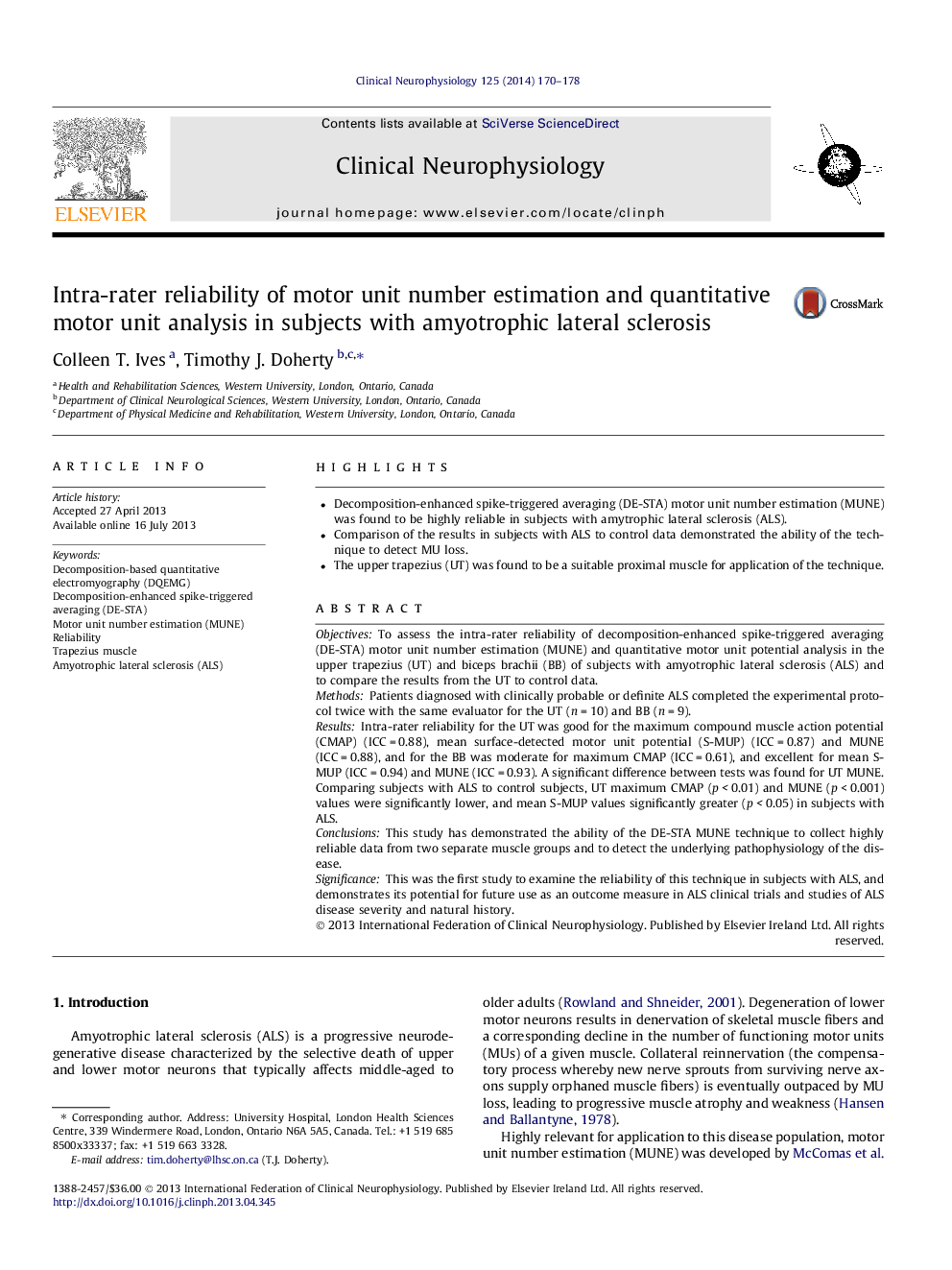| Article ID | Journal | Published Year | Pages | File Type |
|---|---|---|---|---|
| 3043647 | Clinical Neurophysiology | 2014 | 9 Pages |
•Decomposition-enhanced spike-triggered averaging (DE-STA) motor unit number estimation (MUNE) was found to be highly reliable in subjects with amytrophic lateral sclerosis (ALS).•Comparison of the results in subjects with ALS to control data demonstrated the ability of the technique to detect MU loss.•The upper trapezius (UT) was found to be a suitable proximal muscle for application of the technique.
ObjectivesTo assess the intra-rater reliability of decomposition-enhanced spike-triggered averaging (DE-STA) motor unit number estimation (MUNE) and quantitative motor unit potential analysis in the upper trapezius (UT) and biceps brachii (BB) of subjects with amyotrophic lateral sclerosis (ALS) and to compare the results from the UT to control data.MethodsPatients diagnosed with clinically probable or definite ALS completed the experimental protocol twice with the same evaluator for the UT (n = 10) and BB (n = 9).ResultsIntra-rater reliability for the UT was good for the maximum compound muscle action potential (CMAP) (ICC = 0.88), mean surface-detected motor unit potential (S-MUP) (ICC = 0.87) and MUNE (ICC = 0.88), and for the BB was moderate for maximum CMAP (ICC = 0.61), and excellent for mean S-MUP (ICC = 0.94) and MUNE (ICC = 0.93). A significant difference between tests was found for UT MUNE. Comparing subjects with ALS to control subjects, UT maximum CMAP (p < 0.01) and MUNE (p < 0.001) values were significantly lower, and mean S-MUP values significantly greater (p < 0.05) in subjects with ALS.ConclusionsThis study has demonstrated the ability of the DE-STA MUNE technique to collect highly reliable data from two separate muscle groups and to detect the underlying pathophysiology of the disease.SignificanceThis was the first study to examine the reliability of this technique in subjects with ALS, and demonstrates its potential for future use as an outcome measure in ALS clinical trials and studies of ALS disease severity and natural history.
